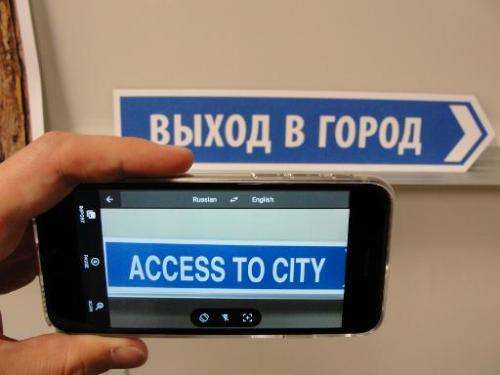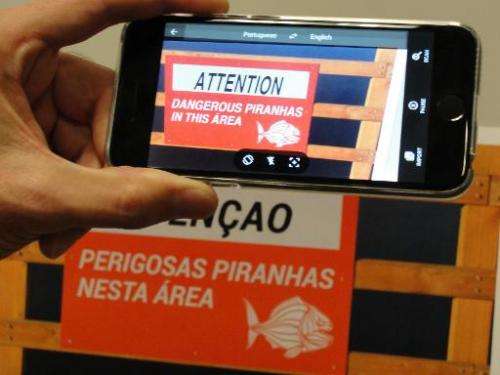Google turns smartphones into real-time translators

Google began turning smartphones into real-time language translators—of both written and spoken content.
The California-based Internet titan is hoping that, along with making it easier for people to understand one another on their travels, Google Translate will serve as a useful tool for teachers, medical personnel, police and others with important roles in increasingly multi-lingual communities.
The company on Wednesday began rolling out a new version of a free Google Translate application that, in part, lets people point Android or Apple smartphones at signs, menus, recipes or other material written in French, German, Italian, Portuguese, Russian, or Spanish and see it in English.
"We're letting you instantly translate text using your camera, so it's way easier to navigate street signs in the Italian countryside or decide what to order off a Barcelona menu," the Google Translate team said in a blog post.
The feature builds on Word Lens technology that Google acquired last year when it bought Quest Visual, a startup founded by former video game developer Otavio Good.
Word Lens uses video mode in smartphone cameras to scan scenes, identify writing and then display it as if it were written in English, a demonstration by Good revealed.
"If you are looking at a restaurant menu, it's nice to see which thing on the menu you are looking at so you can point at it when you order," Good said as he used his iPhone to scan and translate an Italian pasta recipe.

Word Lens in Google Translate operates independent of the Internet, avoiding data charges from telecommunication service providers, he explained.
The new Google Translate also features a conversation mode that uses voice recognition and the power of the Internet cloud to translate both sides of a chat between people speaking different languages, the demonstration showed.
People pair any two of 38 language options, then smartphones listen in and convert them during chats. An automated voice speaks translations, which are displayed in writing on smartphone screens, while transcripts of chats can be saved.
Computing power for translating conversations comes from Google servers, so connections to the Internet through WiFi or telecom carriers are needed.
The team at Google is working to expand available languages and capabilities, according to Good.
© 2015 AFP





















